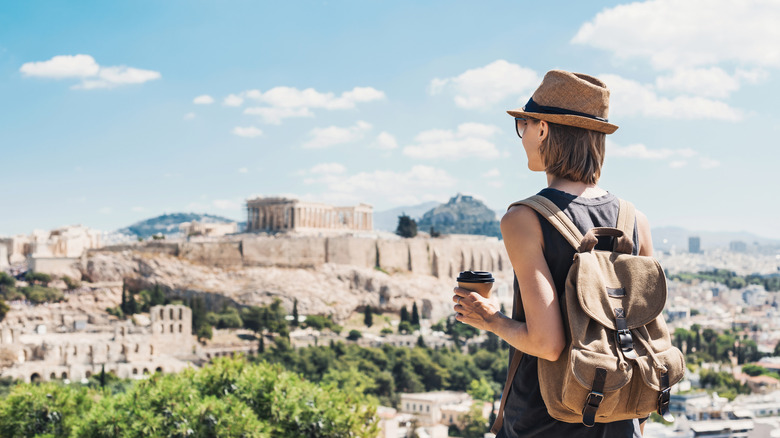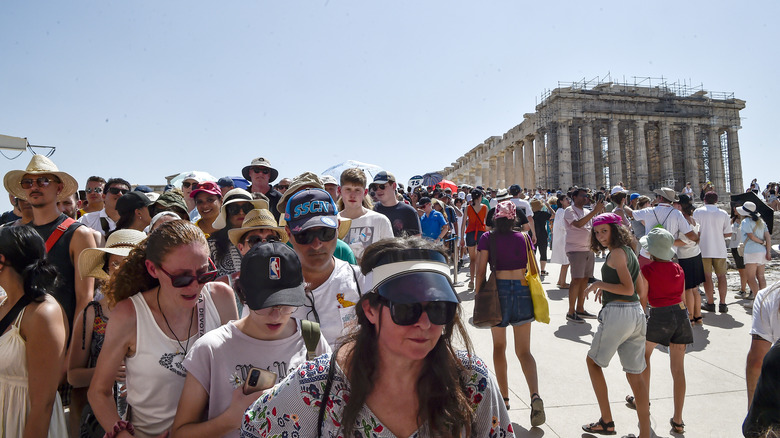Why You May Want To Plan Ahead If You Are Visiting This Popular Greek Attraction
We all like getting up close to things that are very old and famous, even if it is just to get a selfie and say we've been there. Just take the huge crowds that cluster daily around the Mona Lisa in the Louvre in Paris; there is very little time for anyone to admire Leonardo Da Vinci's technique. The same goes for many of the planet's favorite architectural gems. That's why Greek authorities have called time on overcrowding at their national symbol, the Acropolis in Athens. In August 2023, Greek culture minister Lina Mendoni announced that steps would be put in place to curb the amount of daily footfall, which means you will need to plan ahead if you want to visit this iconic site.
The Acropolis, named as a finalist in a 2007 poll to decide a new seven wonders of the world, has dominated the skyline of Athens for around 2,500 years. The word "acropolis" refers to the flat-topped hill that is home to a complex of ancient ruins, the most famous of which is undoubtedly the Parthenon. Devoted to the Goddess Athena and built on the site of a previous temple sacked by the Persians, the surviving Doric columns have withstood gunpowder damage from the Venetians in the 17th century and a powerful earthquake in 1999. Now the gravest threat to the conservation of the Acropolis is the deluge of tourists, with around 3 million visitors each year. If you want to see the ancient site, there are some things to know before you go.
The best times to visit the Acropolis
The Acropolis has been an irresistible draw for visitors for many centuries. Herodotus visited sometime between 460 and 444 BCE and described the site in his writings; Athens and its ancient architecture attracted Grand Tourists in the 18th century; and, controversially, Thomas Bruce, the 7th Lord of Elgin, took it upon himself to liberate the famous "Elgin Marbles" from the Parthenon. More recently, even soaring temperatures during the 2023 heatwave did little to deter tourists from the site, which was temporarily closed for visitor safety.
In an attempt to reduce overcrowding, Greek authorities are determined to bring down the number of daily guests from 23,000 a day to a more manageable 20,000. In order to accomplish this, allotted visiting times have been introduced when tickets are purchased in advance, allowing visitors around an hour to explore the site. Historically, around half of all guests arrive between when the Acropolis opens at 8 a.m. and noon. Correspondingly, the largest number of pre-booked slots is allotted to the first hour.
The high season is between June and October when both the temperatures and footfall are highest. Generally speaking, the best time to visit is very early in the morning before it gets too hot and the bulk of the crowds arrive. Alternatively, hang on until the last two hours before closing time, when most of the tourists have dispersed and you can enjoy strolling the ruins as the sun sets over the city.

